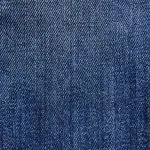When you find an old stain on your favorite fabric, it can feel overwhelming, but knowing how to approach it makes all the difference. Start by identifying the type of stain and the fabric material, as this will guide your choice of treatment. You'll want to gather the right supplies and pre-treat the stain effectively before applying any cleaning method. The real challenge often comes after that initial treatment, so understanding the nuances of rinsing and checking results is crucial. What steps should you take next to ensure the stain doesn't return?
Table of Contents
Key Takeaways
- Identify the stain type and fabric to choose the most effective cleaning method for old stains.
- Pre-treat old stains with a suitable stain remover or a vinegar and baking soda mixture, allowing it to soak for 10 minutes.
- Gently scrub the stained area with a soft-bristle brush to lift the stain without damaging the fabric.
- Rinse thoroughly with cold water, checking for any remaining stains before drying to avoid setting them.
Identify the Stain Type
To effectively tackle old stains, the first step is to identify what type of stain you're dealing with. Different stains require different treatment methods, so knowing the source of the stain is crucial. Start by examining the fabric and the stain closely. Is it a food stain, like grease or tomato sauce? Or is it something like ink or red wine? Each type presents unique challenges.
Once you've narrowed it down, consider the color and consistency. For instance, a dark stain might indicate something like berry juice, while a yellowish tint could suggest mustard or curry. If you're unsure, think about when and how the stain occurred. Was it from a recent spill, or has it been sitting for a while? Older stains often become more stubborn and may require more effort.
Don't forget to take note of the fabric type. Different materials react differently to cleaning agents. Cotton, for example, can usually withstand harsher treatments than silk. By identifying the stain type and fabric, you'll set yourself up for success in your stain removal efforts. Knowing these details makes all the difference in effectively restoring your fabrics.
Gather Necessary Supplies
Before you tackle those stubborn stains, you'll need to gather some essential cleaning products and tools.
Make sure you have everything you need on hand, from stain removers to scrubbing brushes.
Having the right supplies will make the process much easier and more effective.
Essential Cleaning Products
Gathering the right cleaning products is crucial for effectively tackling old stains on fabrics.
You'll want to start with a good stain remover. Look for one that's specifically designed for the type of stain you're dealing with, whether it's grease, ink, or food. Always read the label to ensure it's safe for your fabric.
Next, grab some white vinegar and baking soda. These household staples work wonders for a variety of stains and can be used in tandem for extra cleaning power. A mixture of vinegar and baking soda can lift stains effectively when applied correctly.
You'll also need a liquid laundry detergent. Opt for one that's suitable for your fabric type and effective against tough stains. Having a brush on hand, like a soft-bristled toothbrush, can help you work the cleaner into the fabric without causing damage.
Lastly, hydrogen peroxide is a great option for whitening and brightening fabrics, but make sure to spot-test first to avoid discoloration.
Stain Removal Tools
Having the right stain removal tools on hand makes all the difference when tackling old stains on fabrics. You can save time and frustration by gathering essential supplies before diving into your stain-fighting mission. Here's a quick reference table of must-have tools to ensure you're always prepared:
| Tool | Purpose | Tip |
|---|---|---|
| Stain Remover Spray | Breaks down tough stains | Apply and let it sit for 5-10 minutes. |
| Soft-Bristle Brush | Gently scrubs stains without damaging fabric | Use it to work the stain remover into the fabric. |
| Microfiber Cloth | Absorbs excess moisture and lifts stains | Dampen slightly for better absorption. |
| White Towel | Prevents color transfer | Always use white to avoid dye issues. |
| Bucket or Basin | Holds water and cleaning solutions | Fill with warm water for soaking. |
Pre-Treat the Stain
To effectively tackle an old stain, you should pre-treat it as soon as possible with the right solution. The sooner you act, the better your chances of removing the stain completely.
Start by identifying the type of fabric and the stain, which will guide you in choosing the appropriate pre-treatment method.
Here are some steps you can take to pre-treat the stain:
- Blot the Stain: Gently blot the area with a clean cloth to absorb excess liquid without spreading it further.
- Apply a Stain Remover: Use a stain remover or a solution made from household items like vinegar or baking soda, depending on the stain type.
- Let It Soak: Allow the solution to sit on the stain for at least 5-10 minutes to penetrate the fabric and break down the stain.
Choose the Right Cleaning Method
Choosing the right cleaning method is crucial for effectively removing old stains without damaging the fabric.
Start by identifying the type of stain and the fabric involved. Different stains require different approaches; for instance, protein-based stains like blood or egg might respond well to cold water and enzymatic cleaners, while grease stains often need a degreaser.
Next, consider the fabric's care label. Some materials, like silk or wool, are delicate and might require gentle treatment. Stick to mild detergents and avoid harsh chemicals that can lead to discoloration or damage. For more durable fabrics, like cotton or polyester, you can be a bit more aggressive with your cleaning methods.
You also need to decide between soaking, scrubbing, or using a stain remover. Soaking can help loosen tough stains, while gentle scrubbing with a soft-bristled brush can lift the stain without harming the fabric. If you're using a commercial stain remover, always test it on a small, inconspicuous area first to ensure it won't cause any adverse effects.
Rinse and Check Results
After treating the stain, rinse the fabric thoroughly with cold water to remove any cleaning solution and check the results.
It's essential to inspect the fabric closely to determine if the stain is gone or if further action is needed. If you notice that the stain persists, don't panic; just repeat the cleaning process or try a different method.
Here are some key points to keep in mind during this step:
- Inspect the Fabric: Look carefully at the stained area under good lighting.
- Feel the Surface: Sometimes, stains can leave a residue that you can feel.
- Avoid Heat: Don't use heat until you're sure the stain is completely gone, as heat can set the stain.
Once you've rinsed and checked the results, you should have a clearer idea of whether the stain treatment was successful or if adjustments are needed.
Prevent Future Stains
Preventing future stains starts with being mindful of your surroundings and the materials you use in daily life. When you're eating or drinking, try to keep your food and beverages away from delicate fabrics. Using coasters and placemats can be a simple yet effective barrier against spills.
Next, consider the clothing and fabrics you choose. Opt for stain-resistant materials when possible, especially for items you wear regularly or use often. If you're attending an event, wear something that's less prone to staining, like darker colors or synthetic blends.
Don't forget about the power of pre-treatments. Applying a stain repellent spray on your upholstery or clothing can create a protective barrier, giving you more time to react to spills.
Also, always keep a stain-removal kit handy. If an accident happens, you can act quickly to minimize damage.
Frequently Asked Questions
Can I Use Bleach on All Fabric Types?
No, you can't use bleach on all fabric types. It works well on whites and some colorfast fabrics, but it can damage delicate materials like silk and wool. Always check care labels before using bleach.
What Should I Do if the Stain Reappears?
If the stain reappears, don't panic. You should first identify the stain type, then repeat your cleaning process. Sometimes, a different approach or treatment might be necessary to effectively remove that stubborn blemish.
Are Homemade Stain Removers Effective?
Homemade stain removers can be surprisingly effective. You'll find common ingredients like vinegar and baking soda work wonders on many stains. Just remember to test on a small area first to avoid damage.
How Do I Know if the Fabric Is Colorfast?
To check if your fabric's colorfast, test a small, hidden area with water and a white cloth. If the color bleeds onto the cloth, it isn't colorfast, and you should proceed with caution.
Is It Safe to Use a Dryer After Treating a Stain?
It's best to avoid using a dryer immediately after treating a stain. You should check if the stain's gone first; heat can set the stain, making it harder to remove later. Always air dry if unsure.
- Why Open-Weave Scrim Is the Secret to Stunning Event and Canopy Designs - June 26, 2025
- Creating Large-Scale Art Installations With Scrim Fabric - June 26, 2025
- Scrim Fabric in Upholstery: Understanding Its Use as a Backing Material - June 26, 2025





